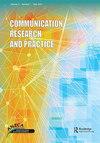Seeing chronic inequities: A health communication call to action
IF 0.9
Q3 COMMUNICATION
引用次数: 0
Abstract
Seeing Chronic Inequities – A Health Communication Call to Action Communication is central to perceptions of and meanings given to health and wellbeing, delivery of health care and health promotion (Kreps & Bonaguro, 2009). It is also key to how individuals and communities experience and enact agency, personhood, legitimacy, culture, and, importantly, access to care. When these are hindered, the result can be inequitable access, cultural bias and racism in service provision within “mainstream” health systems, as research in health communication, Indigenous, and migrant studies has shown (e.g., Dutta, 2008; Hatala et al., 2015; Len-Ríos, 2009). Indeed, health systems infused with an ideology of individual responsibility marginalise alternative worldviews and contribute to chronic health inequities because these systems can neglect the cultural dimensions of wellbeing, service provision and health messaging (Ganesh & McAllum, 2010). The COVID-19 pandemic has brought us to a critical crossroad: Unprecedented pressure on healthcare systems globally continues to lay bare pre-existing but underacknowledged fractures in healthcare policy, provision and end-user experience. Now more than ever, there is an increased need for accessible, culture-centred and culturally responsive practices (e.g., Oetzel et al. 2020; Ramsden, 2002; Zarcadoolas et al., 2006). Yet, the pandemic also offers a unique opportunity to rethink conceptualisations and practices related to health (Simpson et al., 2020): We urge scholars in digital, health, Indigenous, intercultural, interpersonal, organizational, and political fields of communication to continue to probe, question, critique, rethink and redesign health care practices and systems. The articles in this special issue explore inequities, stigma, and culturally (un)safe health care both before (Nykänen; Price & Hill; Robb) and during the pandemic (Jayan & Dutta; Nguyen et al.). In the articles’ respective examination of health-related messages, discourses, narratives and worldviews, two main themes are evident: (a) stigma-based marginalisation and (b) cultural safety, care and community.正视长期不公平现象:卫生传播行动呼吁
看到长期的不平等——健康传播的行动呼吁传播是对健康和福祉、卫生保健的提供和健康促进的认知和意义的核心(Kreps & Bonaguro, 2009)。它也是个人和社区如何体验和制定机构、人格、合法性、文化以及更重要的是获得护理的关键。当这些受到阻碍时,结果可能是在“主流”卫生系统内提供服务的不公平获取、文化偏见和种族主义,正如卫生传播、土著和移民研究所表明的那样(例如,Dutta, 2008年;Hatala et al., 2015;Len-Rios, 2009)。事实上,充满个人责任意识形态的卫生系统边缘化了其他世界观,并导致了长期的卫生不平等,因为这些系统可能忽视了福利、服务提供和卫生信息的文化层面(Ganesh & McAllum, 2010)。2019冠状病毒病大流行将我们带到了一个关键的十字路口:全球医疗保健系统面临前所未有的压力,继续暴露出医疗保健政策、提供和最终用户体验方面存在但未得到充分承认的裂缝。现在比以往任何时候都更需要可访问的、以文化为中心的和对文化有反应的做法(例如,Oetzel等人,2020;拉姆斯登,2002;Zarcadoolas et al., 2006)。然而,大流行也为重新思考与健康相关的概念和实践提供了一个独特的机会(Simpson等人,2020):我们敦促数字、健康、土著、跨文化、人际、组织和政治传播领域的学者继续探索、质疑、批评、重新思考和重新设计卫生保健实践和系统。本期特刊的文章探讨了不平等、耻辱和文化(不)安全的医疗保健(Nykänen;Price & Hill;Robb)和大流行期间(Jayan & Dutta;Nguyen等人)。在文章各自对与健康有关的信息、话语、叙述和世界观的审查中,有两个主要主题是显而易见的:(a)基于耻辱的边缘化和(b)文化安全、护理和社区。
本文章由计算机程序翻译,如有差异,请以英文原文为准。
求助全文
约1分钟内获得全文
求助全文

 求助内容:
求助内容: 应助结果提醒方式:
应助结果提醒方式:


